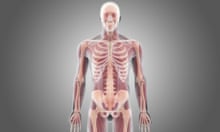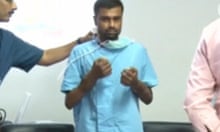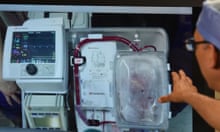Three Austrians have had their injured hands replaced with bionic ones that they can control using nerves and muscles transplanted into their arms from their legs.
The three men are the first to undergo what doctors refer to as “bionic reconstruction”, which involves a voluntary amputation, the transplantof nerves and muscles and learning to use faint signals from them to command the hand.
People with bionic hands have in the past controlled them primarily with manual settings.
“This is the first time we have bionically reconstructed a hand,” said Dr Oskar Aszmann, of the Medical University of Vienna, who developed the approach with colleagues. “If I saw these kinds of patients five to seven years ago, I would have just shrugged my shoulders and said ‘there’s nothing I can do for you.’”
He said the procedure had its complications, including the need for patients to take anti-rejection medicines for the rest of their lives.
Aszmann and his colleagues described the cases of the three men in a report published in the online version of the Lancet on Wednesday. The men decided on amputation after having the bionic hand strapped on to their injured hand, to see how it might function.
For Milorad Marinkovic, 30, who lost the use of his right hand in a motorbike accident more than a decade ago, the bionic replacement has allowed him to hold things like a sandwich or bottle of water – and to play with his three children. “I can throw things, but it is harder to catch a ball, because my right hand is still not quite as quick and natural [as my left],” he said.
Dr Simon Kay, who authored an accompanying commentary and performed Britain’s first hand transplant, said there would always be major limits to bionic hands: the brain had thousands of ways to send messages to the hand, but a robotic prosthetic was unable to handle such complexity. “The question is always going to be: How do we get the message from the mind to the metal?” he said.
Patients like Marinkovic, however, have few complaints about his bionic hand, which also proved popular with his son. When he first got the device, his son, then four, would put it on and walk proudly around with it, telling others in his kindergarten class that his father was a robot
Marinkovic says using his bionic hand is nearly as natural as using his uninjured hand. “I can do almost everything with it. I just don’t have any feeling in it.”
Aszmann estimated the new procedure cost around €30,000 (£22,000). The research was paid for by groups including the Austrian Council for Research and Technology Development and a laboratory that receives funds from Otto Bock, the maker of the prosthetics.







